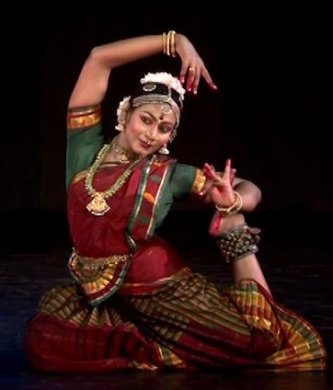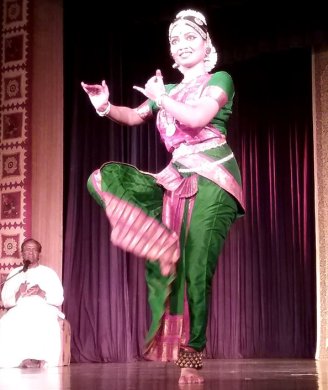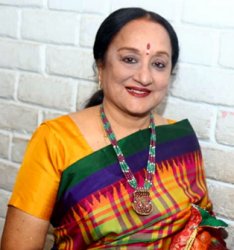
|   |

|   |
Of Nattuvanars, Chinna Melam and the past to the present July 6, 2016 One of the finest developments of 21st century in Bharatanatyam is the entry of the daughters, sons, and granddaughters of hereditary dancers and Nattuvanars into the field as performers and teachers. I would call this the latest Renaissance. It began in the late 20th century in small instances when the last gurus passed away, leaving sons and daughters who knew the art in practice, but did not quite have the courage to make dance a vocation gradually tested the waters. They eventually made the bold decision to treat their artistic inheritance seriously. With almost all the teachers of dance belonging to the non hereditary community steadily attracting more and more students, and thus earning sizable wealth, prestige and power, the young inheritors from families of gurus woke up to try their hand at teaching and also performing. Today they are making their mark! The 1930s saw the decline of the old Chinna Melam group...they were the group led by the Nattuvanars, with young Devadasis dancing as soloists, duos and sometimes small groups. Many historical facts contributed to the decline. Chief among them being a blanket ban on public dance performances, and a legal fatwa on the dedication of girls to temple service and all the attendant customs.  Aniruddha Knight
The lifeline for dancers was patronage by the wealthy, be it Maharajahs, merchants or wealthy noblemen. That was cut. Hence a serious disenfranchisement made the dancers give up dancing altogether. Tradition forbade them from becoming teachers. I heard Balasaraswati in conversation once. She said it would be an aberration for her to pick up the "Talam" which only her guru was entitled to hold. However, the gurus survived, made hay while the sun was shining and urbanised their lifestyle and became efficient teachers. But rather alarmingly towards the end of the 20th century, the gurus also saw the end of their road. Their sons, most of them, distanced themselves from the profession. They showed little interest, their heritage had become a broken fragile remnant of a past that they did not openly show pride in, and patronage did not come to them easily. The families did not assert themselves, barring a few. This is one reason why many western scholars pronounced hastily that the art of the Nattuvanars and Devadasis had been "appropriated" by outsiders! Providentially, something is happening now in the families of erstwhile Devadasis and their relatives, the Nattuvanars. A young generation has decided to look at dance with fresh eyes. They are realising two things...one the value of the Art. And two, the viability of running a dance school. The fallout is a happy situation. Authentic teachers are emerging in the old Banis. A pride in their heritage is shining in the horizon. Dance which had passed hands to an entirely new community, namely the educated young Brahmin girls of Tamilnadu, is quietly veering towards other communities, giving them a throwback to the original demography of dance. At the recent Balasaraswati-Scripps award function, her grandson (son of Lakshmi and Douglas Knight) Aniruddha heralded the new renaissance in a significant way. He believes in tradition, is proud of it, and intends to strive and bring aspirants under the fold of a particular Bani.... epitomised by his grandmother, and defined by nine generations of musicians. The auditorium was brimming with pavadai clad young girls who are his students (over two hundred!) and who belong to diverse backgrounds and social strata. They reminded me of the enthusiastic young dancers who mill around all the Shiva temples, herded by their teachers, to perform during Sivarathri. I had written about this unique crowd surge and collective aspiration in the "mofussil" areas in an article in The Hindu entitled "Everybody is dancing." The earthiness of this phenomenon has its own subtle social connotations. After all, neither the kings, nor the dancers and musicians they patronised for a thousand years belonged to the upper castes. Their duties were defined. Brahmin scholars like Venkatamakhi codified our music system. The trinity of music - Tyagaraja, Dikshitar and Syama Sastry took forward the system by becoming outstanding composers. Brahmins sang the devotional songs in Telugu, the language of the Tanjore court. Some sang in performances and danced in special dramatic performances like the Bhagavata Mela. Their women never danced, and sang only in their homes! Thus, a new generation of non-Brahmins coming into Bharatanatyam is history completing a circle. A few members of the traditional families are quietly taking interest in dance. I do hope more emerge from their century old closet to perform a memory recall exercise, and do their family pride some justice. We cannot turn the clock backwards and find instant gurus. However this new beginning augurs well for dance to become inclusive. There is no doubt that we must acknowledge the stellar contributions of various artists from non hereditary backgrounds who have carried the torch of Bharatanatyam for about a hundred years with remarkable zealousness. The dancers put Bharatanatyam on the national map. Most often at a personal cost. They explained the antiquity of the Art and were joined in a chorus, as it were, by self styled pundits who ventured to write and speak up even if sometimes their knowledge of Natya Sastra was sketchy. A classical dance worthy of national awards was defined for the new India. That was the cornerstone of the twentieth century Renaissance and it has been lauded loud and clear.  Nritya Pillai  Sruthi Natanakumar Recently, I saw two short performances - one by Nritya Pillai of Chennai at the big temple in Tanjore, and the other, a demonstration by Sruthi Natanakumar of Bombay. Nritya is the granddaughter of Swamimalai Rajaratnam Pillai and great granddaughter of Vazhuvur Ramiah Pillai. Sruthi is the granddaughter of Kalyanasundaram Pillai of Bombay Rajarajeswari Natya Kala Mandir. His family boasts of a long lineage of Tanjore artists and they belong to the temple town of Tiruvidaimarudur. Both these young dancers are very talented and impressive. Girls of Nattuvanar families never performed even if they knew dance. They learnt by their close association with the Gurukulam but never went public with their talents. The new development is most welcome. First, it shows that women of the old families are coming into their own, and the taboos regarding their taking up dance is gone. I can perceive that the young women have, (to use a clichéd phrase) dance in their blood. Nritya seems to have added some new influences in her dance which I could easily perceive (she is learning from Aniruddha Knight, and also does nattuvangam for his performances) and it really suits her. Her Varnam in Sankarabharanam, "Manavi Chey Konna" which I used to see Vazhuvur disciples dance when I was a kid, came across very well in Nritya's performance. Sruthi, the younger of the two, demonstrated excerpts from the Guru Kalyanasundaram repertoire and did it with finesse, poise and perfection. She is at the right age to dance a lot on stage and I hope she will. Only then will she hone the skills needed for the stage and develop performance expertise. Both these dancers just danced.....what I mean is ....they were not displaying their prowess or indicating their talent. This is how I danced in my twenties, and still try to do so. It is an old world edict....the Art as they used to say, is bigger than the artist. So I was very happy to see the persona of the dancer overshadowed by the beauty of the dance itself. The Tiruvidaimarudur family of Nattuvanars, with Kuppiah Pillai the head, migrated to Bombay and set up a school there in the forties. Kuppiah Pillai's sons, the youngest being Kalyanasundaram, continued after him. His son Harikrishna, along with others of his generation, are carrying on the legacy. Hari's family is fully involved...his wife, a good singer, sings for dance, his young son Chaitanya can dance and also play the mridangam. Sruthi is the daughter of Kalyansundaram's daughter. I am sure the future of this Tanjore style of Bharatanatyam is well protected.  Lakshmi Vishwanathan, a prime disciple of Guru Kanjeevaram Elappa Pillai, is an exponent of the Thanjavur style of Bharatanatyam. She is also a trained vocalist. She is the author of several acclaimed books: Bharatanatyam - the Tamil Heritage, Kunjamma - Ode to a Nightingale, Kapaleeswara Temple, Women of Pride -The Devadasi Heritage. Her film 'The Poetry of Dance' was commissioned by the Festival of India. The Mamallapuram Dance Festival started in 1991 was Lakshmi's brainchild. She has served on several arts committees. She has served as Vice President of Music Academy (Chennai) and is a member of South Zone Cultural Centre. Post your comments Pl provide your name and email id along with your comment. All appropriate comments posted with name and email id in the blog will also be featured in the site. |